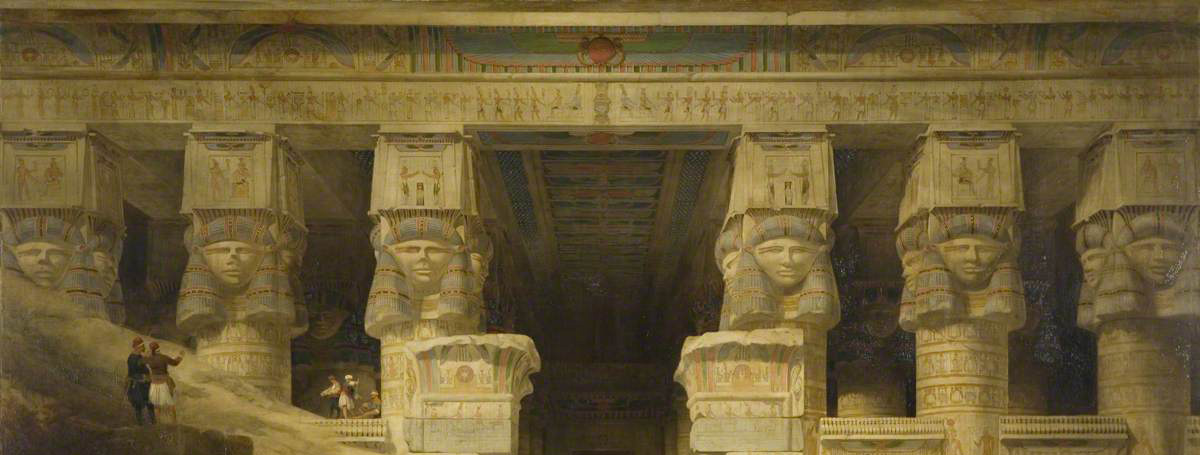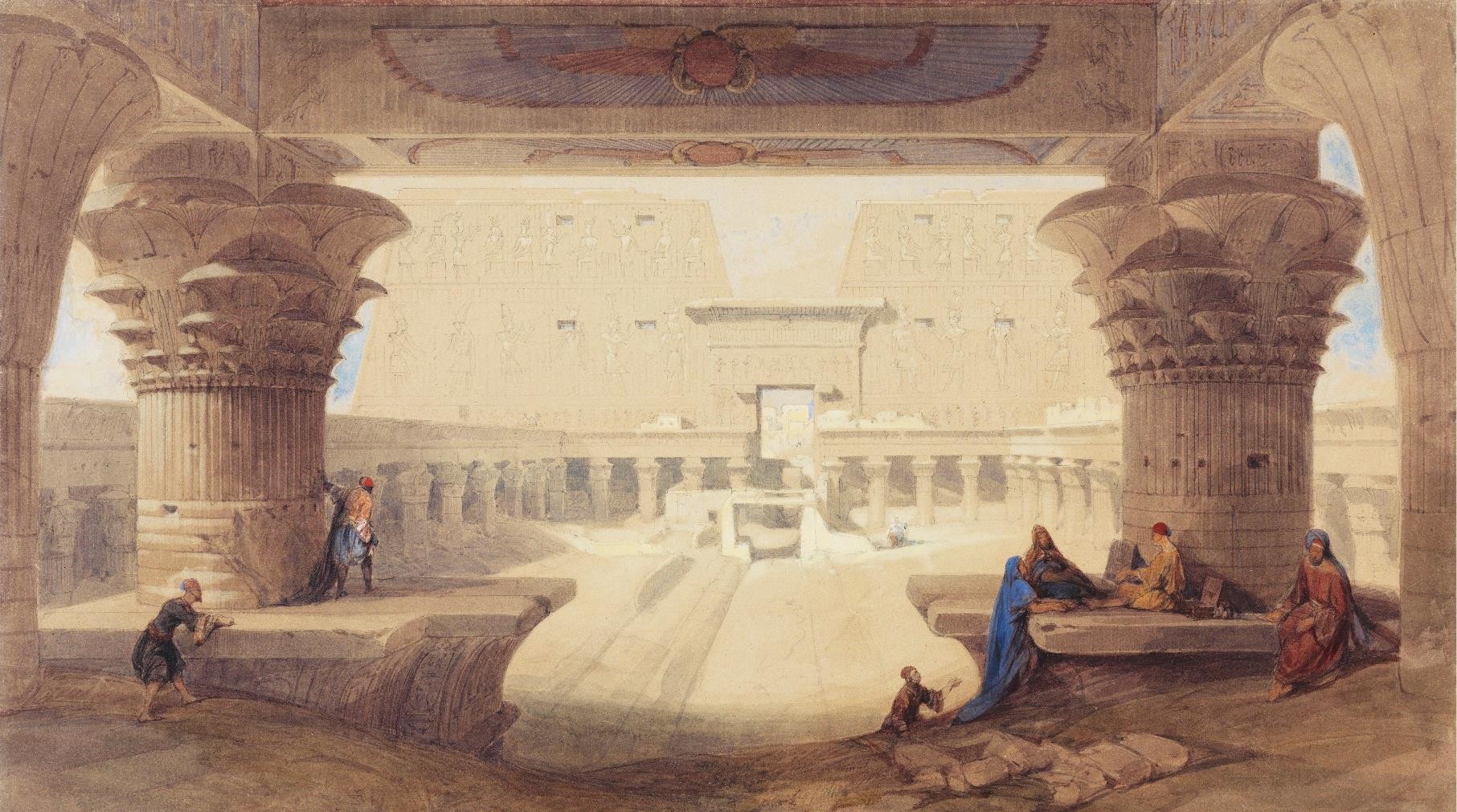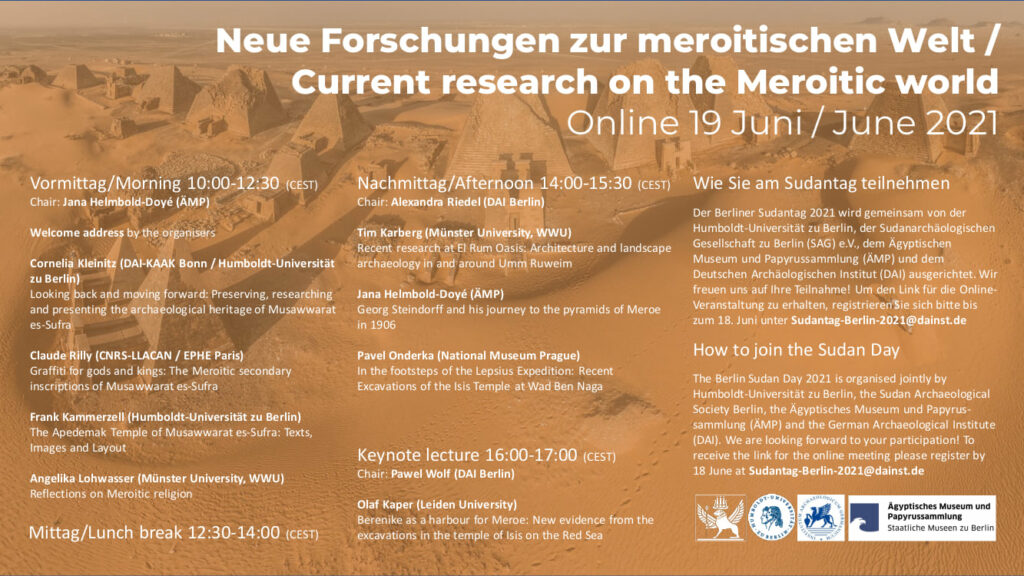Events
-
Online events in het najaar
Ondanks dat er steeds meer mogelijk is zijn er nog genoeg online lezingen, cursussen en congressen bij te wonen. Ze staan hier voor je verzameld:
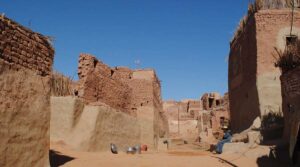 14 september, 18.00 uur
14 september, 18.00 uurCamp life at Balat (Dakhla Oasis) – the Sheikh Muftah site
Dr. Clara Jeuthe (DAI Cairo)The excavations of the archaeological mission of the IFAO in Balat (Dakhla Oasis) uncovered a large residential camp area of the so-called Sheikh Muftah Group, the indigenous population of the oasis. Dating from the early 4th Dynasty (ca. 2600 BC), these camps were only briefly but intensively occupied. Revealing for the first time a well preserved intra-site stratigraphy with hitherto unknown dwelling features, the excavation results provide in-depth insights into the camp life of a non-sedentary group in a time, when Egyptian Pharaonic settlement activities were just beginning to be evident in archaeological data. Thus, the data gathered offers not only hints about tool and food production for example; they also contribute to the discussions about non-sedentary groups in the Western Desert and the transcultural exchange between the Sheikh Muftah community in Balat and the Egyptian Pharaonic population.
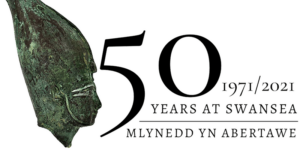 15 – 17 september
15 – 17 septemberThe Egypt Centre
Zoom conference to mark fifty years since part of the Wellcome Collection arrived to Swansea UniversityOn the 17th September 1971, ninety-two crates consisting of some 4,500 objects (mainly Egyptian) arrived to Swansea University. This was part of dispersal of the Egyptian material at the Wellcome Collection, which probably amassed somewhere in the region of 20,000 objects. To mark the fiftieth anniversary of this event, the Egypt Centre will be hosting a free three-day Zoom (Webinar) conference. The conference will focus on Wellcome’s Egyptian and Sudanese collections, which were dispersed to numerous institutions following his death in 1936. It will feature talks and virtual handling sessions/tours by curators, collections managers, and researchers associated with the Wellcome material.
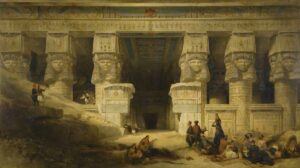 16 september, 19.00 uur
16 september, 19.00 uurFrom Avon to Nile: The adventurous life of Amelia Edwards
Dr. Margaret JonesAs a best-selling novelist, and a bold and witty travel writer, Amelia Edwards was a household name. At age 50, inspired by a Nile journey from Cairo to Upper Egypt, she embarked on a new career to promote archaeology and conservation. She co-founded the Egypt Exploration Fund and packed lecture halls on both sides of the Atlantic. She brought to vivid life the bygone world of Ancient Egypt; often using her talks to subtly promote women’s rights.
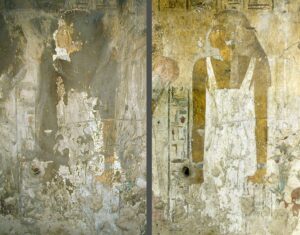 23 september, 12.00 uur
23 september, 12.00 uurConservation of Theban Tomb Paintings: A Tale of Two Tombs
Bianca MaddenThis talk will look at the purpose and context of conservation work in the tombs of the Theban Necropolis, the most common deterioration factors found and treatment approaches. Two tombs will be used as examples, the American Research Centre in Egypt’s project at the Tomb of Menna (TT69), and the 16-year conservation and research project at the Tomb Chapel of Sennefer (TT96A) by the Belgian Archaeological Mission in the Theban Necropolis by the Université de Liège and Université libre de Bruxelles. Bianca will discuss conservation approaches, ethics, the materiality of the tombs, as well as the specific technical challenges of each project.
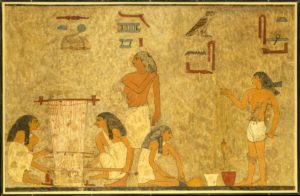 Vanaf 23 september
Vanaf 23 septemberTextiles and Ancient Egypt
Dr. Carolyn Graves-BrownInteractieve zoom cursus
10 x donderdag van 16-18 uurAncient Egyptian textiles appear in museums all across the world, from mummy wrappings to diaphanous flowing white robes and even colourful early medieval garments, but how much do we really know about them?
 28 september, 18.30 uur
28 september, 18.30 uurNew Discoveries in the Middle Kingdom Royal Necropolis at South Abydos
Dr. Josef WegnerRecent excavations at South Abydos have revealed a royal cemetery dating to 1850-1600 BC. Initiated by Senwosret III in the 12th Dynasty, the necropolis of ‘Anubis Mountain’ continued to be used by subsequent kings of the 13th Dynasty and Second Intermediate Period. The lecture will look at work on the 12 known tombs. These include the tombs of Senwosret III, Seneb-Kay and those attributed to the brother-kings Neferhotep I, Sobekhotep IV and Sahathor. Many questions remain and the lecture will delve into the mysteries about this necropolis and the pharaohs buried there.
30 september, 10.00 uur
What does it mean to be ‘sad’ in Ancient Egypt?
Madeline JenkinsThe nature, function and universality of emotions has recently been contested. Rather than assuming that emotions are universal, the social constructionist position on emotions argues that emotions are, to an extent, constructed by the cultural and temporal contexts in which they are evoked. Against this background, this paper examines the usage of a single ancient Egyptian lexeme belonging to the ‘sadness’ semantic field, namely ı͗nd to first arrive at a precise meaning of the lexeme before exploring how the emotion concept(s) denoted by ı͗nd could have been rendered linguistically. Key concepts from the History of Emotions approach are employed to frame the analysis. To conclude, this paper compares the emotion concept(s) denoted by ı͗nd with the anglophone emotion concept of ‘sadness’.
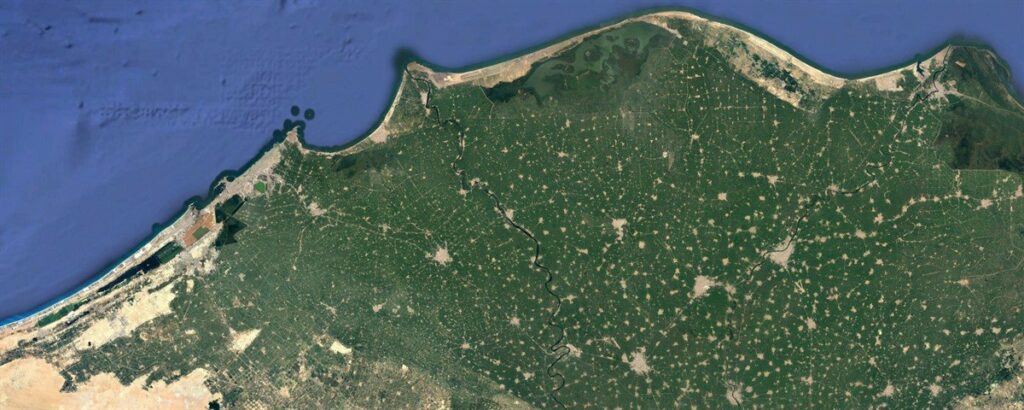
30 september – 1 oktober
EES Delta Survey Conference & Workshop
The Delta Survey Conference and Workshop is a biannual event bringing together researchers working in the Egyptian Delta. It is supported by the EES Delta Survey project and run in collaboration with a host institution and always in partnership with the Ministry of Tourism and Antiquities.
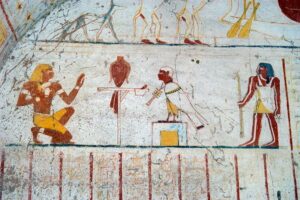 4 oktober, 18.00 uur
4 oktober, 18.00 uurHigh-status burials in the Napatan Period: cultural interactions between Egypt and Nubia
Dr. John Taylor (British Museum)The burials of the Napatan royal families are notable for their adoption of Egyptian mortuary practices, iconography and texts. The appearance of closely comparable features in Egyptian burials at the same period raises important questions about the transmission of ideas. This lecture examines evidence from both regions and considers the Napatans’ role both as instigators and recipients of change in the mechanics of providing for the dead.
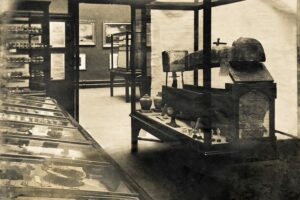 13 oktober, 14.00 uur
13 oktober, 14.00 uurMrs Goodison’s Egyptology Collection
Dr. Jo BackhouseLocal lady Mrs Anne Goodison was a collector of Egyptology during the 19th century. Records simply record her as an amateur Egyptologist and a student of hieroglyphics. As she was a collector and buyer rather than an excavator, very little is recorded of her. This description however, does not do justice to the fantastic collection that she put together which is now on display at The Atkinson. Jo Backhouse will be discussing what we do know about Mrs Goodison and also taking a look at some of the key pieces from the collection.
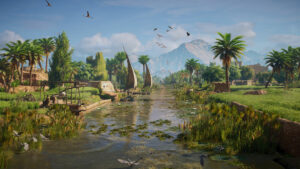 14 oktober, 19.30 uur
14 oktober, 19.30 uurTombe met uitzicht: Landschap en klimaat in het oude Egypte
Nicky van de BeekGratis voor studenten en donateurs van Huis van Horus, anders €5
De grafwanden van Oudegyptische tombes staan vol met landschappen: woestijnen waarin gejaagd wordt met honden, moerasscènes met de grafeigenaar vissend in een woud van papyrus, herders die hun kuddes laten grazen tussen het struikgewas en zorgvuldig vormgegeven tuinen. Vooral de Ouderijks grafscènes laten een wereld zien die niet meer bestaat: water waarin nijlpaarden en krokodillen elkaar bevechten, een woestijn krioelend van gazelles, oryxen en ibexen. Was dit wishful thinking of zag het landschap er echt zo anders uit dan nu? Welke rol speelde de jaarlijkse Nijloverstroming? En wat ging er mis aan het einde van het Oude Rijk?
Ook tijdens het Nieuwe Rijk horen we over ontypisch Egyptisch weer: graffiti in de Thebaanse heuvels spreken over ‘het neerkomen van water uit de hemel’. De Vallei der Koningen had te maken met flash floods. En in westelijke Thebe werden grote tempels, paleizen en kunstmatige meren aangelegd in een gebied waar nu de woestijn heerst. Hoe gingen de Oude Egyptenaren om met klimaatverandering en wat kunnen we hier vandaag de dag van leren?
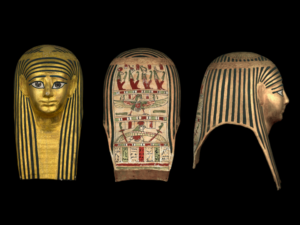 19 oktober, 14.00 uur
19 oktober, 14.00 uurLayer by Layer: the Manufacture of Graeco-Roman Funerary Masks
Marie VandenbeuschThis talk will approach Ptolemaic cartonnage masks from a manufacturing point of view. These funerary artefacts were produced by layering textiles – or reused papyrus sheets – with plaster and glue. Despite the use of the same basic components, the process of manufacture could vary depending on shape, size, time and place. We will try to clarify the production methods and the different phases of manufacture, as well as contextualise a group of masks curated by the British Museum. To provide a better understanding of their production, we will examine these masks layer by layer, using different imagery techniques, such as X-ray, CT and surface scanning. We will consider the use of a mould to shape the face from inside, the layering of textile, the application of gesso to strengthen the mask or to sculpt features, and finally the decorative layer of paints and gilding.
28 oktober, 14.50 uur
Extraordinary bodies: What do Egyptian statues do?
Professor Elizabeth FroodKosten: £5
In this lecture I discuss the composition of temple statues, and the questions they raise in terms of personhood, performance, and material presence. I take a case study approach, examining in particular a small group of late 18th and early 19th Dynasty statues which seemingly defy convention, presenting their owners as shabtis, including one that shows its high-ranking owner as a miller. Why these forms in temples?
 2 november, 14.00 uur
2 november, 14.00 uurTiny Egypt: Ancient Egypt through a macro lens
Julia ThorneTiny Egypt is a photographic project that takes a closer look at the more diminutive artefacts from Ancient Egypt and explores their beauty that’s often too small for the naked eye. In this talk, Julia will take you on a tour of her favourite images of artefacts from Manchester Museum, The Garstang Museum of Archaeology, and Bolton Libraries and Museum to show you how she uses macro photography and focus stacking to create stunning images. You’ll also hear about other techniques, such as dramatic lighting and lightboxes, to produce images that have been featured in exhibitions such as the Garstang Museum’s Book of the Dead: Passport through the Underworld and Manchester Museum’s globally touring Golden Mummies of Egypt.
 20 november, 15.00 uur
20 november, 15.00 uurFrom Saqqara to Leiden: The journey of the tomb chapel of Hetepherakhet
Nicky van de Beek£3 tot £6
The offering chapel of Hetepherakhty was once part of a mastaba tomb in the desert of Saqqara. It dates back to the fifth dynasty, when kings built pyramid complexes and sun temples scattered around the Memphite necropolis. Hetepherakhty held titles of a judicial nature, but as a priest he was also connected to the cult of former kings. His modest sized offering chapel is decorated with high quality relief decoration. It shows him spearfishing in the marshes, inspecting agricultural activities and enjoying a funeral meal. He is surrounded by scenes of fishing, fowling, baking and brewing, as well as preparations for his funeral. The tomb was excavated by Auguste Mariette in the1860s, when a different stance was held with regard to antiquities than nowadays. How did the tomb chapel end up in a museum in Leiden? What happened during its long museum history? And how can it be studied using modern technology?
-
Activiteiten in juli
Deze maand staat in het teken van Deir el-Medina, met lezingen en workshops rond dit thema georganiseerd door stichting Huis van Horus.
Zelf zou ik een virtuele rondleiding geven door Thebe aan de hand van het spel Assassin’s Creed Origins, en een workshop schilderen met zelfgemaakte pigmenten. Helaas heb ik om persoonlijke redenen moeten afzeggen. Mijn vader ligt momenteel in het ziekenhuis en dit is een grote zorg. Daarom ben ik ook teruggekeerd naar Nederland. Wel probeer ik deze website bij te houden en binnenkort weer wat werk aan mijn PhD te doen.
Geniet u vooral van de activiteiten die nog virtueel plaatsvinden deze maand:
Heel juli
Deir el-Medina Maand bij Huis van Horus
De diverse activiteiten zijn ook los te boeken.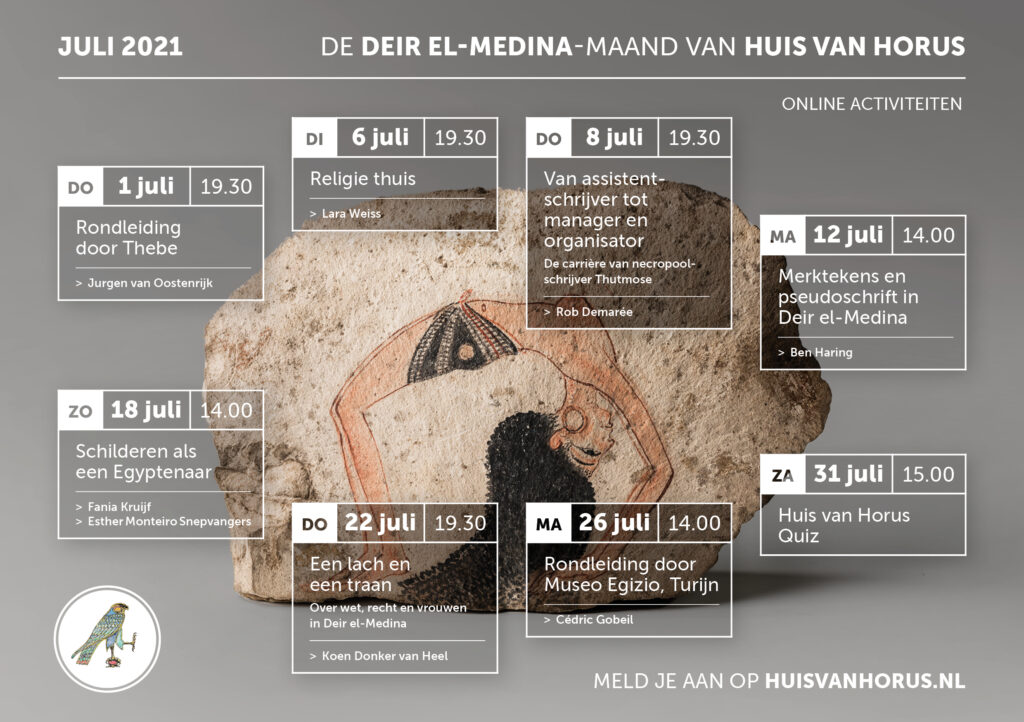
Dinsdag 6 juli, 12.00 uur
Picnicking on the Pyramid
Chris ElliottDo it nowadays, and you face arrest. But once, climbing the Great Pyramid was not just something you could do, but something seemingly everyone did. Join Dr Chris Elliott as he explores how you did it, how the so-called Pyramid Arabs made it possible, how much it cost, how long it took, and what you did at the top, including what has been described as autonymolithography. Learn about the celebrities who have climbed it, from Egyptologists and authors to royalty, how long ago people started climbing it, and whether it was the only pyramid people climbed.
Zaterdag 10 juli
Between Africa and Asia: New research from the Sinai Peninsula
A study day of the Egypt Exploration Society and the Palestine Exploration FundKosten: £10-25
The Sinai Peninsula forms a geological land bridge between north Africa and western Asia connecting the diverse cultures existing there for thousands of years. However, wider understanding of this area and the interconnections it facilitated are often overlooked. This online study day, organised in partnership by the Egypt Exploration Society and the Palestine Exploration Fund, will consider some of the latest research into the archaeology and history of this unique landscape from its position as a frontier zone, as a melting pot for early Christianity, through to its late antiquity and subsequent historical exploration and mapping.
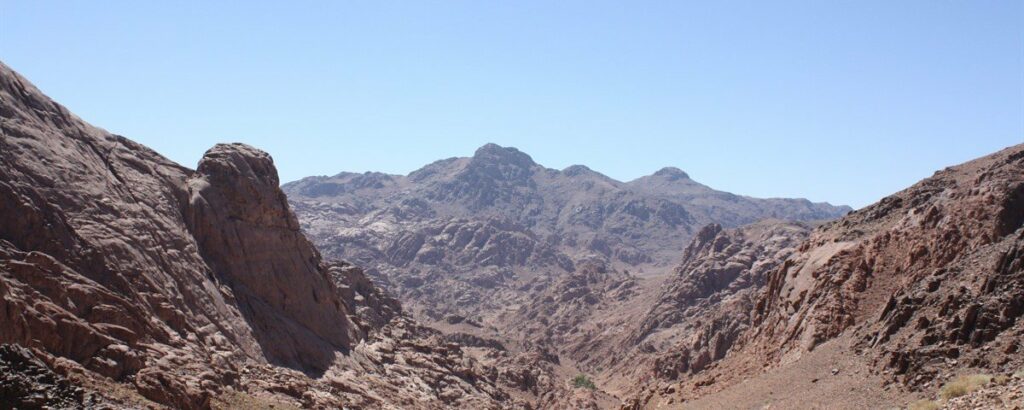
9-11 juli
SÄK conferentie aan de JGU Mainz
Kosten: €10
Was bedeutet Ägyptologie im Jahre 2021? Was sind aktuelle Trends, Herausforderungen, Methoden und Möglichkeiten unseres Faches? Mit dem thematisch offen gewählten Motto Ägyptologie 2021 möchten wir die Ägyptologie in ihrer ganzen Breite und Vielfalt ansprechen. Ägyptologie im Jahr 2021 bedeutet für uns: vielfältige Themen, aktuelle Ergebnisse und nachhaltige Forschung auf allen Karrierestufen. Wir laden daher die Studierenden und Ägyptolog*innen der deutschsprachigen Community herzlich ein, ihre Interessen unabhängig vom Forschungsschwerpunkt und -gegenstand in unterschiedlichen Formaten zu präsentieren und zu diskutieren.
Donderdag 15 juli, 19.00 uur
Renewing Amarna
Dr. Alain-Pierre Zivie discusses the art and history of Amarna, an extensive archaeological site representing the ancient city of Akhetaten. He has been involved with recent extraordinary discoveries such as the tomb of the artist Thutmose, creator of the glorious bust of Queen Nefertiti.
Other key figures to be discussed include Maïa, a prominent lady of the court under Akhenaten and Tutankhamun; Abdiel, a vizier with a Semitic name, who served both Amenhotep III and his son Akhenaten; and Râïay, scribe of the treasury of Aten.
Zaterdag 17 juli
Amarna Fundraiser & Study Day
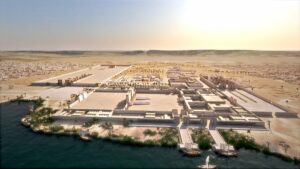
Kosten: £10
Programma:
Dr Anna Stevens – Equipping the dead: Perfume cones, pots and pendants
Miriam Bertram, MA – Great Aten Temple
Prof. Gretchen Dabbs – Was there an epidemic at Amarna?
Dr Anna Hodgkinson – Making glass beads at Amarna
Prof. Barry Kemp – City of gold, city of mud: Using one’s imagination at AmarnaDinsdag 20 juli, 12.00 uur
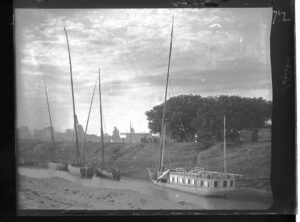 Sailing through the EES Archives
Sailing through the EES Archives
Ziad MorsyAs a by-product of the outstanding work by both EES staff and volunteers in digitising the Society’s photographic archives, a number of photographs of Nile boats appeared on their Flickr account. Photographing Nile boats or scenery of Egypt was not the primary goal of the different photographers, rather than it was a way of recording the archaeological digs sponsored by the Egypt Exploration Society. This talk will sail through the different albums available in high resolution on Flicker and climb on board of each Nile boat available in the archive, to give a better understanding of the role of these boats on the Nile in Egypt and Sudan. By using comparative analogy and research, this talk will include an introduction of boat types on the Nile during the 19th and 20th centuries, and a trip through the different albums.
Dinsdag 27 juli, 18.00 uur
News from the Temple of Amenhotep III at Kôm el-Hettan
Prof. Hourig SourouzianThe Colossi of Memnon and Amenhotep III Temple Conservation Project has worked in the Temple of Amenhotep III at Kôm el-Hettan since 1998 under the auspices of the Ministry of Tourism and Antiquities and the German Archaeological Institute. Documentation, reassembly, and display of ruined monuments on the site, as well as further research and publications of the latest discoveries, have been the project’s main activities. This lecture will virtually explore the ancient and modern site, the progress of conservation work, and newly discovered features, with an outlook on the site management and the itinerary of the future visitors.
-
Online events in juni
Zaterdag 5 juni
Museumnacht Leiden Online
met o.a. Op zoek naar Toetanchamon in het Rijksmuseum van OudhedenKosten: €5
Zondag 6 juni, 19.00 uur
Bes-like figures in the ancient Egyptian Book of the Dead
Dr. Rita LucarelliBes was a popular god in ancient Egypt and he still is today. Less known are instead some apotropaic Bes-like figures occurring in the vignettes of spells belonging to the corpus of the Book of the Dead, especially on papyrus, and which play the function of demonic guardians of the netherworld. In this lecture, these figures will be analyzed and discussed in order to understand their (benevolent or malevolent) agency within the heterogeneous divine and demonic population of the Realm of the Dead.
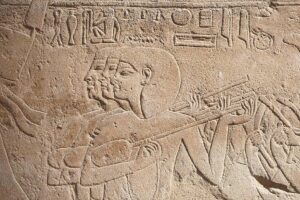 Maandag 7 juni, 18.15 uur
Maandag 7 juni, 18.15 uurMusik: ein fast unsichtbares Fundament der altägyptischen Kultur
Prof. Dr. John Baines (Oxford)Musik und Tanz sind integrale Bestandteile des Menschseins. Das galt für die Alten Ägypter wie für uns heute. In Ägypten war Musik unverzichtbarer Bestandteil bei Festen, Riten und beim Militär: In verschiedenen Epochen übernahmen Hofleute die Rolle von Musikern, Werke der Literatur wurden musikalisch aufgeführt. Durch Musik konnten Ideen und Emotionen ausgedrückt werden, die sonst fast nicht öffentlich ausgesprochen wurden. Trotz ihrer Bedeutung wird die Musik relativ wenig von Ägyptologen berücksichtigt. Der Klang der ägyptischen Musik mag fast unerreichbar sein, aber reiche Quellen bieten einen Zugang zum musikalischen Leben.
Dinsdag 8 juni, 17.15 uur
Bes in Bahariya
Françoise Labrique (University of Cologne / Université libre de Bruxelles)From the XXVIth dynasty to the Period of the Roman Empire, monumental remains in the Bahariya-oasis, despite their bad state, show the prestige of the god Bes as a warrior, a musician, a protector, an atlant. Was he the object of a specific cult? After a synthesis of the archaeological finds of these last years, we will try to define his theological role.
Dinsdag 8 juni, 18.00 uur
From the Museum back to the tomb: the virtual rejoining of a sarcophagus and its burial in 26th dynasty Saqqara
Rita LucarelliThe Late Period inner sarcophagus of “chief physician” and “overseer of the Temehu (Libyan mercenaries)” Psamtek, found in 1900 in Psamtek’s tomb south of the Unas pyramid at Saqqara, is now on public display in the Phoebe A. Hearst Museum of Anthropology in Berkeley, California (PAHMA 5-522). Like many museum objects, its modern display cannot adequately replicate aspects of its original archaeological context — in a deep rock-cut shaft, nestled among hundreds of impressive elite tombs at the necropolis.
In order to virtually re-place the sarcophagus in its original context, a joint team from the University of California, Berkeley and Santa Cruz, is developing a dynamic VR-headset experience that combines a 3D reconstruction model of Saqqara with a photogrammetric model of the sarcophagus. In this presentation, I will provide a demo of the VR headset application (under development), present the “Book of the Dead in 3D project”, aiming at building a database of annotated 3D coffins as the one of Psamtek, and describe the technological and intellectual challenges of combining multiple types of data in the application.
Woensdag 9 juni, 18.00 uur
Museums in Egypt: past, present, future
Salima Ikram (Cairo)11-12 juni
Online workshop: Researching the History of Egyptology
Kosten: £10
Many themes have dominated research into the history of Egyptology including the Napoleonic Description de l’Egypte, the decipherment of hieroglyphs, and the explorations of early travellers. But increasingly, broader themes relating to the history of Egyptology are being discussed including the influence of political conditions on the development of early Egyptology in the 19th century, and the work of the first Egyptologists as seen in their original archives.
Dinsdag 15 juni, 19.30 uur
Het linnen van de farao’s: de textielcollectie van Alfred Wiedemann in Brussel en Leiden
Veerle van Kersen MA (KU Leuven)Kosten: gratis voor donateurs en studenten, €5 voor niet-donateurs
Linnen vervulde millennia lang een belangrijke rol in de Egyptische samenleving. Naast het gebruik in het dagelijks leven was het ook een onmisbaar element bij religieuze en funeraire praktijken, zoals het mummificatieritueel. Tot voor kort zagen de meeste egyptologen mummiewindsels echter als onbelangrijk, en niet de moeite om te bewaren. Veel funerair textiel werd zo weggegooid, of in stukjes geknipt en verhandeld als souvenir.
De Duitse egyptoloog Alfred Wiedemann verzamelde deze stukjes textiel, en schonk rond 1900 een deel van zijn collectie aan de musea in Brussel en Leiden. In deze lezing zullen we de herkomst van deze fragmenten nader bekijken, en onderzoeken hoe ze door de antiquiteitenhandel in Europa zijn beland. Daarnaast bespreken we ook de resultaten van een technische analyse van deze fragmenten. De informatie verweven in dit textiel geeft ons namelijk nieuwe inzichten over de evolutie van textieltechnologie in Egypte.
Donderdag 17 juni, 18.00 uur
The Museo Egizio’s current research at Deir el-Medina
Dr Cedric GobeilWithin the framework of the French Archaeological mission at Deir El-Medina carried by the IFAO, the Museo Egizio of Turin is conducting research on a few Ramesside tombs located in the Western necropolis. These tombs have been chosen based on the many artifacts that belonged to the owners of these tombs and are now kept in the museum. In addition to giving the opportunity to perform a study on these fragile structures using new technologies, this fieldwork is a unique chance to recontextualize many objects of the museum’s collection by shedding a new and fresh light on them. During this talk, viewers will have the chance to get a first glimpse at this work in progress.
Facebook Live (link to be posted)
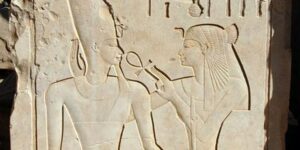 Donderdag 17 juni, 19.00 uur
Donderdag 17 juni, 19.00 uurHatshepsut and the Temple of Mut
Prof. Betsy Bryan
By 1470 B.C.E., Hatshepsut emerged as King, technically reigning alongside her stepson and nephew Thutmose III. As he was still a youth, Hatshepsut dominated their coregency. As ruler she constructed numerous edifices honoring the great gods of Thebes, Amun, and Mut. For Mut, she rebuilt the temple and renewed festival rites involving sacred drunkenness. Hatshepsut’s devotion to the Mut Temple connects her to Karnak, Luxor, and her glorious Deir el Bahri across the Nile.
Zaterdag 19 juni
Sudan Day 2021
Registreer uiterlijk 18 juni via Sudantag-Berlin-2021@dainst.de
Zaterdag 19 juni, 15.30 uur
The Funerary Monuments of Hatshepsut and Senenmut
Prof. Aidan DodsonKosten: £5
Hatshepsut’s reign marked an important horizon in the development of Egyptian royal funerary arrangements, with the definitive adoption of the Valley of the Kings as the kingly cemetery, and the first ‘mature’ royal memorial temple. In the private sphere, the funerary arrangements of her close associate Senenmut show important features, some of which are seemingly unique for a private person. This afternoon we will therefore explore their monuments and what they tell us about not only Egyptian funerary archaeology, but also what they may say about the much-debated nature of the their personal relationship.
Zaterdag 19 juni, 19.00 uur
The History and conservation of Khonsu Temple
Dr. Nicholas WarnerIn 2020, ARCE prioritized completing the conservation of this significant Pharaonic monument starting in the fall of 2021 with complete documentation using 3D laser scanning. The work is scheduled to continue for at least four years. It will initially focus on exterior structural repairs and consolidation, followed by conserving the remaining un-treated polychrome painted surfaces within the temple and further training for local conservators and site managers.
Dinsdag 22 juni, 12.00 uur
The EES Amara West excavations
Dr Tomomi FushiyaArchaeological practice is not isolated from society. Relationships are forged in reflection of the time. Led by Herbert W. Fairman, the EES expedition conducted the first systematic excavation of Amara West from 1938, during the Anglo-Egyptian Condominium period. This lecture looks at the relationship of the EES team, Quftis brought from Egypt, and local Nubian communities – all of whom were involved in the Amara West excavation – based on study of archival records in the EES Lucy Gura Archive, and memories of former Sudanese workers who still live around the site which I recorded during fieldwork with the British Museum’s Amara West Research Project (2015-2018).
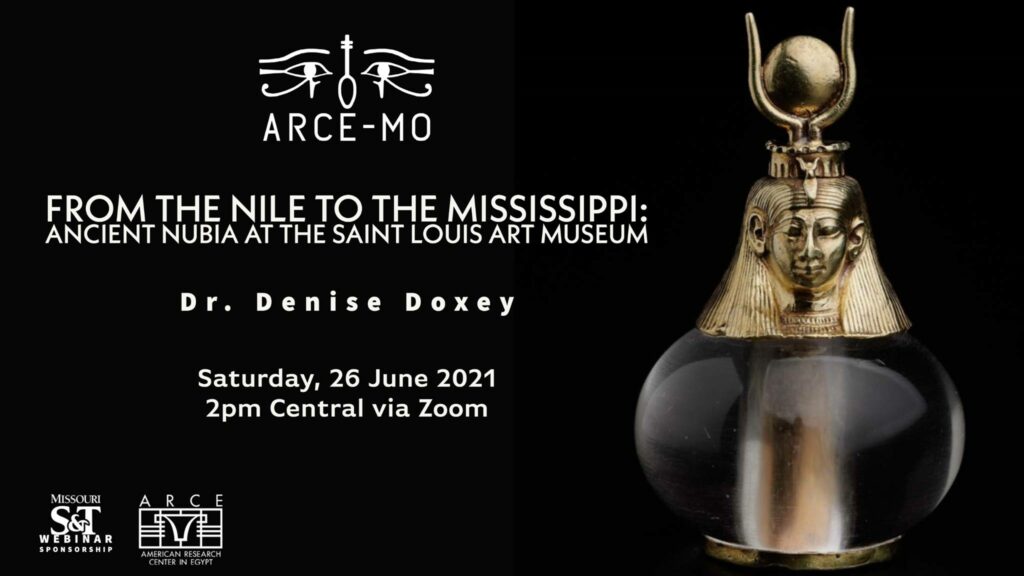
Dinsdag 22 juni, 20.00 uur
De Belgische opgravingen in de rotsnecropool van Elkab (1986-1999)
Stan Hendrickx (UHasselt/PXL-MAD)Kosten: €4
Tussen 1986 en 1999 onderzocht het Comité voor Belgische Opgravingen in Egypte een aantal rotsgraven uit het late Oude Rijk in de rotsnecropool te Elkab. De graven bevinden zich in het Noordwestelijke deel van de necropool, in het zicht van het woongebied aan de rand van de Nijl. Van uitzonderlijk belang is het feit dat sommige graven in rechtstreeks verband kunnen gebracht worden met inscripties in de Wadi Hellal, drie kilometer verder in de woestijn. De teksten verwijzen naar priesters van Nekhbet: minstens twee graven behoorden aan deze priesters toe, waaronder dat van “Sawikai” (sA-w(i)k(A=i), het enige graf dat ook gedecoreerd werd. Daarnaast werd bovenop de heuvel met de rotsgraven ook een mastaba uit de 3de dynastie opgegraven. Dit uitzonderlijke monument wijst op het grote belang van Elkab gedurende het vroege Oude Rijk.
Zaterdag 26 juni, 21.00 uur
From the Nile to the Mississippi: Ancient Nubia at the Saint Louis Art Museum
Dr. Denise DoxeyNubia: Treasures of Ancient Africa, now on view at the Saint Louis Art Museum, explores the powerful but enigmatic kingdoms of ancient Nubia through their artistic achievements, including magnificent jewelry, pottery, sculpture, metalwork, and more. Drawn entirely from the collection of the Museum of Fine Arts, Boston, it focuses on the sites of Kerma, Napata, and Meroe, spanning some 2,000 years, from about 1700 BCE into the fourth century CE.
Through Nubian art, the exhibition also examines concepts of power, representation, and cultural bias in the ancient world, in the early 20th century, and today. Join guest curator Dr. Denise Doxey for a virtual tour of the exhibition and a discussion of the behind-the-scenes process of developing it.
Dinsdag 29 juni, 18.00 uur
Dahshur before Snefru: The pre-pyramid cultural landscape of Dahshur
Lea Rees (Freie Universität Berlin/University of Cambridge)The pyramid site of Dahshur is traditionally associated with the pyramids built by king Snefru, the founder of the 4th Dynasty. Popular as well as scientific literature often give the impression that the pyramids of the Old Kingdom were built on ‘virgin ground’, untouched by human activity before the rulers decided to erect their monuments at this very location. But in fact, all of the pyramid sites of the Memphite necropolis had already served as an elite burial ground in Pre- and Early Dynastic times. Only at Dahshur such early material seemed to be missing. However, a re-evaluation of excavations carried out in the late 19th century as well as archaeological discoveries of the last 30 years make it possible to draw a provisional picture of the pre-pyramid cultural landscape of Dahshur.

